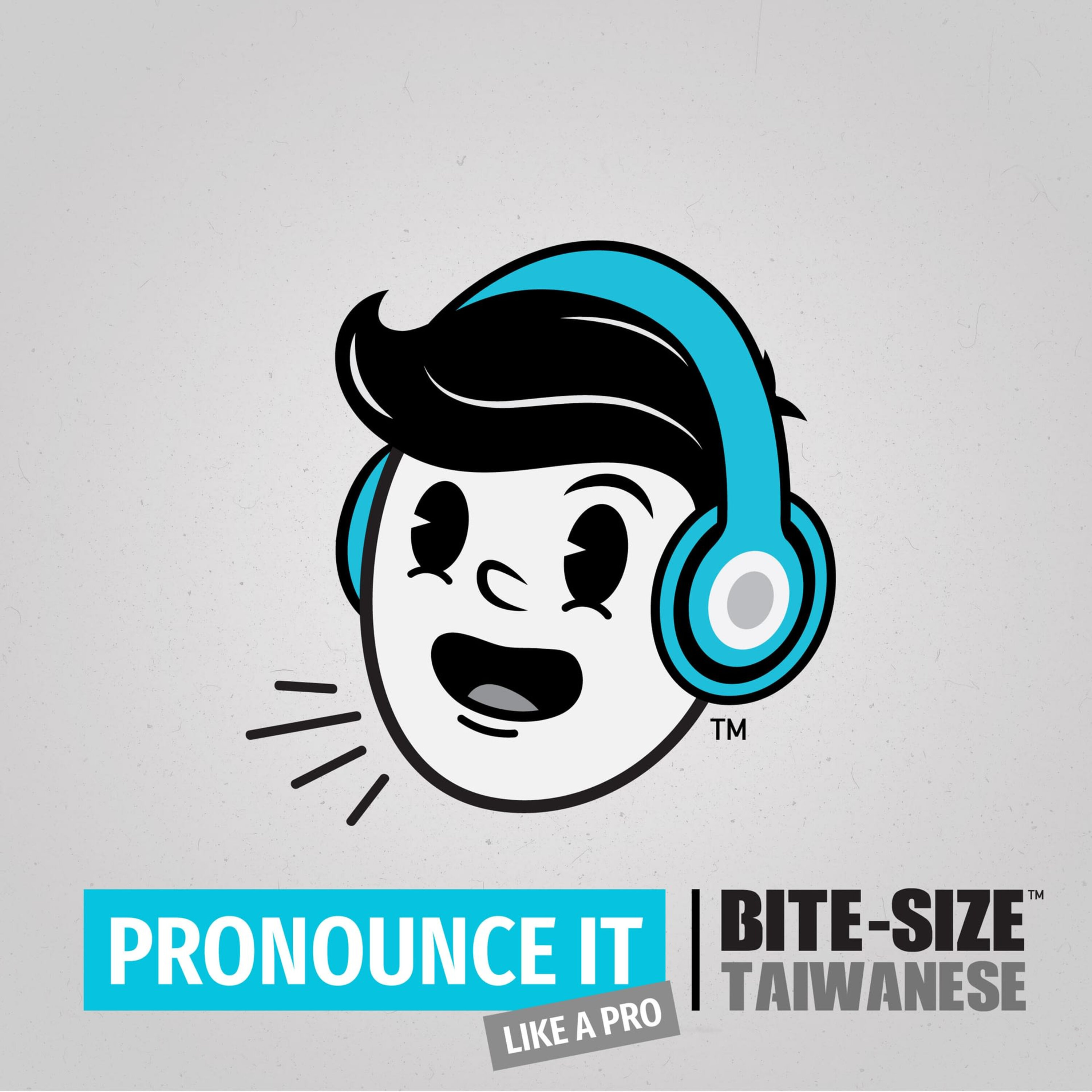Ep02: Unaspirated & Voiceless
Description
In this episode, we learned 11 Taiwanese consonants and the important features about these sounds: voiced, voiceless, aspirated, and unaspirated. For those of you who are familiar with the International Phonetic Alphabet (IPA), the chart below is a quick summary for you:
Place & Manner of Articulation
Voiceless
Voiceless
Voiced
Aspirated
Unaspirated
--
Bilabial
ph- /pʰ/ p- /p/ b- /b/
Alveolar
th- /tʰ/ t- /t/
--
Alveolar affricate
(Palatalization)
tsh- /tsʰ/ (tshi /tɕʰi/) ts- /ts/ (tsi- /tɕi/) j- /dz/ (ji- /dʑi/)
Velar
kh- /kʰ/ k- /k/ g- /g/
1. Aspirated consonants: ph-, th-, tsh-, kh-
When you say an aspirated consonant, you can feel a puff of air coming out of your mouth. Try putting your hand in front of your mouth, and say “pass”, “pen” or “pink”.
The Taiwanese ph-, th- and kh- are just like the normal English “p”, “t” and “k”. The tsh- sound is similar to the “z” in “pizza” with a strong air stream.
2. Unaspirated consonants: p-, t-, ts-, k-
There isn’t a strong burst of air when you say the Taiwanese p-, t-, ts- or k-. In English, it only occurs when a “p”, “t”, or “k” follows another consonant, for example, the “p” in “spend”, “spit” or “spill”.
Taiwanese p-, t- and k-, may be difficult for English speakers because they can sound quite similar to English “b”, “d”, and “g”.
3. Voiced consonants: b-, j-, g-
Your vocal cords rev up when you say a voiced consonant. Place your hand over your throat, and slowly say: “bat”, “bell” and “beak”. If you exaggerate the “b” sound, like “bbb-bat”, “bbb-bell” and “bbb-beak”, you will feel your vocal cords start vibrating even before you release the obstruction created by your lips. That early vibration of your vocal cords is what you need when saying Taiwanese b-, j- or g-.
PRACTICE TIP 1 - ASPIRATED VS UNASPIRATED CONSONANTS
Here’s a little experiment to help you see the difference between aspirated and unaspirated consonants. Try holding a piece of paper just a few inches in front of your mouth, and then say the following word pairs:
pain - Spainpark - sparkpeak - speak pot - spotpin - spin port - sport
You should see when you say the aspirated ones, the puff of air from your mouth will move the paper, whereas the unaspirated ones won’t.
Since English speakers aren’t used to starting a word with an unaspirated consonant, here’s an exercise you can try to help you isolate that sound.
Slowly draw out the “s” sound: sss-pend, sss-pit, sss-park
Split the “s” and “p”, so that there’s a slight pause right before you say the “p”.
Gradually make the “s” quieter and quieter, until you eventually drop the “s” part. But, still keep imagining that you’re making that “s” sound right before the “p”, and you should be able to make a syllable with an unaspirated “p”.
You can also practice this with “stand” or “sky” for an unaspirated “t” or “k”.
PRACTICE TIP 2 - UNASPIRATED VS VOICED CONSONANTS
Try to slowly say the words “bbb-bat”, “bbb-bell”, “bbb-beak” and feel the vibration of your vocal cords. You can also do it with “ggg-go”, “ggg-get”, etc.
Remember the feeling of this “early vibration” of the vocal cords, which is needed for saying the Taiwanese voiced consonants b-, j- and g-. Without such vibration, they would sound like the Taiwanese p-, ts- and k-.
PRACTICE TIP 3 - MINIMAL PAIRS
Practising with minimal pairs like “bió” (second) vs. “pió” (watch) will help you master these sounds in Taiwanese. In our podcast, we’ve provided a list of them. Try listening to the audio a few more times.
bió 秒 (second)pió 錶 (watch)--bí 米 (rice)pí 比 (to compare)--bōng 墓 (grave, tomb)pōng 磅 (to weigh; pound)--pha̍k 曝 (to bask/dry in th
More Episodes
In this episode, we’ve talked about Taiwanese dialects, regional differences, and a bit on Taiwan’s early immigrants and development.
(These show notes use tables and rich formatting. Please visit the episode webpage for an optimal viewing experience.)
Since there are several dialects and accents...
Published 03/13/20
Published 03/13/20
In this episode, we’ve talked about Taiwanese dialects, regional differences, and a bit on Taiwan’s early immigrants and development.
Please visit the episode webpage for a detailed outline of the episode!
Published 03/13/20


